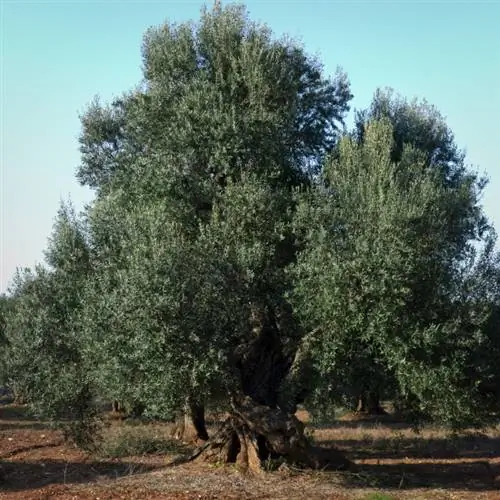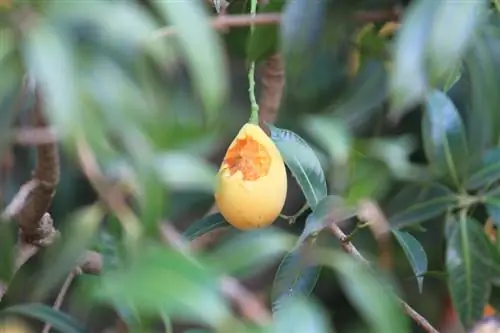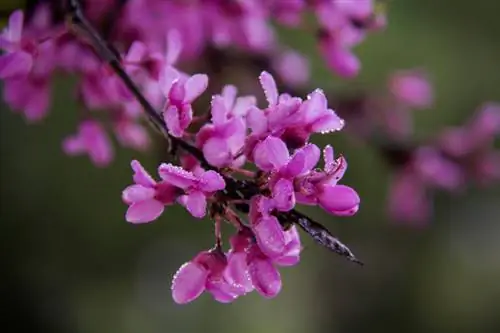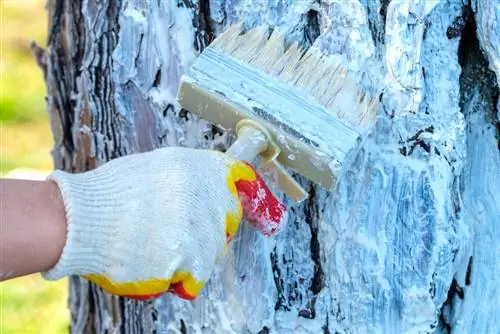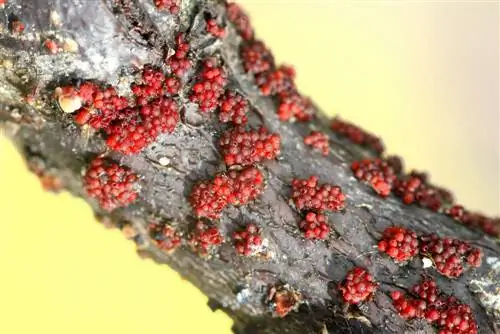- Author admin [email protected].
- Public 2023-12-16 16:46.
- Last modified 2025-01-23 11:21.
Ailing poplar trees in your area or on your own property are you worried? What diseases can be behind defoliated poplar crowns or bark growths and what you can do is explained below.
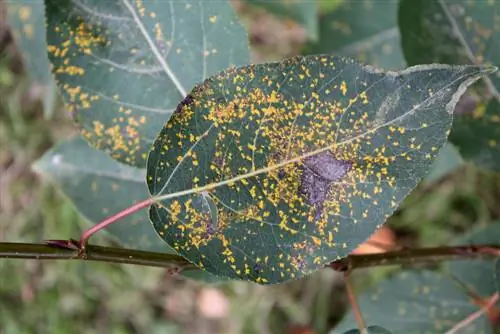
What diseases can affect poplar trees and how to treat them?
Poplar trees can be affected by fungal diseases such as bark blight, poplar rust and shoot tip disease. For prevention and treatment, susceptible poplar species should be avoided, infected shoots removed, sufficient water and suitable site conditions ensured and intermediate fungal hosts eliminated.
Main risk: fungal diseases
Poplar trees are most likely to be affected by fungal diseases. Those that penetrate through the wood are summarized under the term tree cancer or specifically poplar cancer, although in medical terms it is not a real cancer. In addition, certain poplar species are also susceptible to other fungal diseases. Diseases relevant to poplar trees in our latitudes are:
- Bark burn
- Poplar rust
- Shoot tip disease
Bark burn
The bark burn is caused by the ascomycete Csyptodiaporthe populea. It penetrates through cracks in the bark or through the leaf and bud scars of the poplar and initially causes spherical fruiting bodies of the fungus Discosporium populem, a secondary fruit form of the trigger fungus, to form on the annual, dead branches. Brownish, elliptical necrosis then appears on the bark. The so-called treetop drought is also characteristic, i.e. a centrally concentrated dieback of the crown twigs and branches. In older poplars, the main form of the fungus can develop on the dead shoots from the second year of the disease onwards.
Black poplars, aspens, silver poplars and gray poplars are particularly affected by the risk of bark burn. To prevent this, you should select a species that is less or not at all susceptible, such as the balsam poplar, for your property. When cultivating, the main thing to pay attention to is sufficient water supply. If the disease has broken out, affected twigs and branches must be cut out.
Poplar rust
With this fungal disease, many small orange-yellowish spores appear on the top and bottom of the poplar. The fungal pathogen Melampsora populina multiplies massively through these. It overwinters on an intermediate host, for example on larches, arums, larkspurs, marshmallows or celandine in the surrounding area.
In order to put an end to poplar rust, this intermediate host must be identified and removed.
Shoot tip disease
Symptoms of shoot tip disease are initially brownish spots on the young poplar leaves, which then shrink. When the fungus has penetrated the wood, the shoots turn dark and bend downwards in a hook shape. Since the pathogen overwinters in the affected plant parts, these must be cut out early and the fallen leaves disposed of.


